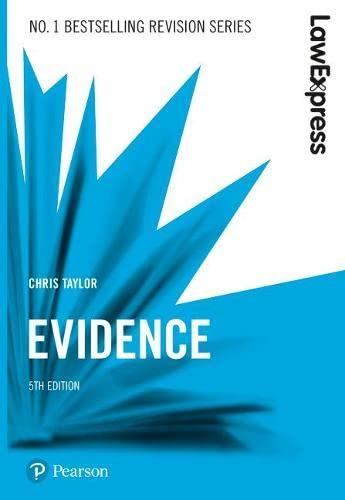Question
Lewis, a veterinarian, is an avid collector of fine art. He has had no formal training in this domain but knows what he likes. One
Lewis, a veterinarian, is an avid collector of fine art. He has had no formal training in this domain but knows what he likes. One day, his neighbour Humphrey, a welder by trade, holds a garage sale on the driveway of his home. Humphrey is in the process of moving and wants to dispense with as many superfluous articles as possible. Lewis examines the piles of odds and ends and is shocked to discover a painting that bears the signature "Picasso". The painting is dusty and the frame is decrepit. Nevertheless, the signature on the painting is, in Lewis' estimation, unmistakably that of Pablo Picasso. Lewis is gobsmacked when he discovers that Humphrey is asking no more than $200 for the painting. Fearing that Humphrey will come to his senses, Lewis, with trembling hands, gives him four fifty-dollar bills and literally runs home with what he believes is the bargain of the century. On that very same day, Lewis wraps his prized possession in a blanket, telephones for a taxi and is driven to the gallery of his friend Mona Leibowicz, a respected art dealer. Mona examines the painting for all of thirty seconds before concluding that it is a slightly better than average reproduction that is worth no more than fifty dollars, at best.
Shortly thereafter, an indignant Lewis consults you in your office. He believes that Humphrey has cheated him and wants to sue his neighbour in order to recover the $200 that he paid for the "knock-off." Discuss the legal issues involved in this case and offer Lewis an opinion with regard to his chances of succeeding in court.
Step by Step Solution
There are 3 Steps involved in it
Step: 1

Get Instant Access to Expert-Tailored Solutions
See step-by-step solutions with expert insights and AI powered tools for academic success
Step: 2

Step: 3

Ace Your Homework with AI
Get the answers you need in no time with our AI-driven, step-by-step assistance
Get Started


